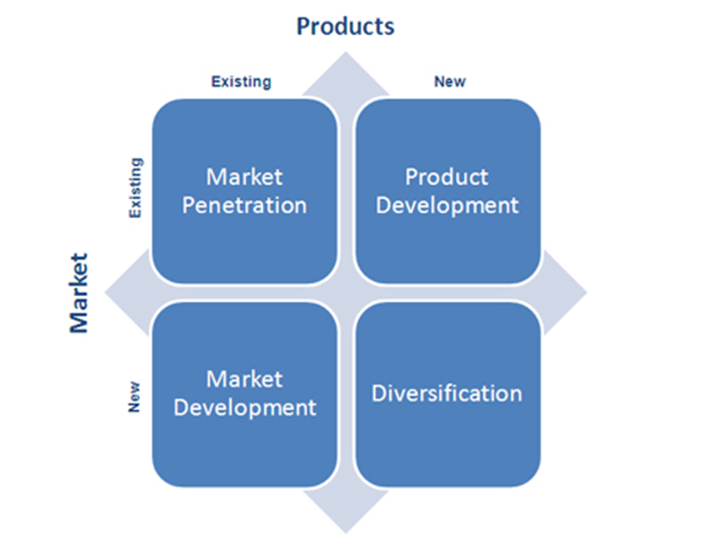Ansoff Growth Matrix
Ansoff Growth matrix assists businesses to increase their revenues by offering four different growth options depending on products and markets.
According to the matrix market penetration is a type of growth where the company attempts to increase the level of sales of existing products into current markets.
Product development growth strategy, on the other hand, involves introducing new products into current markets. A situation where a business enters new market with its existing products is marked as market development growth strategy.
Diversification growth strategy can be achieved through offering new products into new markets.
For example, this principle is followed by Warner Bros., although the extent of utilisation of each individual growth strategy varies. Warner Bros. uses market penetration and product development strategies in the US in particular through periodically introducing popular entertainment shows. Due to the following to this strategy for the season of 2012 – 2013, Warner Bros. Television has accounted for more than 30 per cent of top shows on broadcast TV in the US (Annual Report, 2013).
Acquisition of 55 per cent of Shed Media plc, one of the leading entertainment firms in the UK for USD 100 million in 2010 (Annual Report, 2013) can be referred in order to illustrate market development strategy of Warner Bros. Diversification strategy, as discussed above is engaged by Warner Bros. in relation to quality of content and the manners of delivery and consumption of films and entertainment products and services.
References
Annual Report (2013) Time Warner

